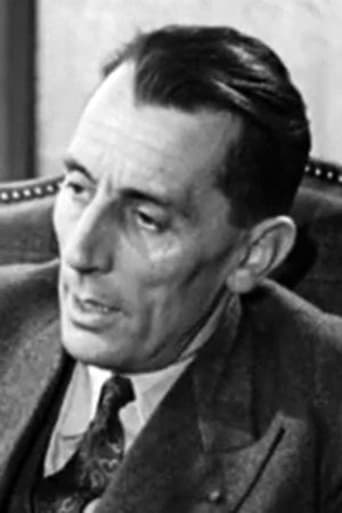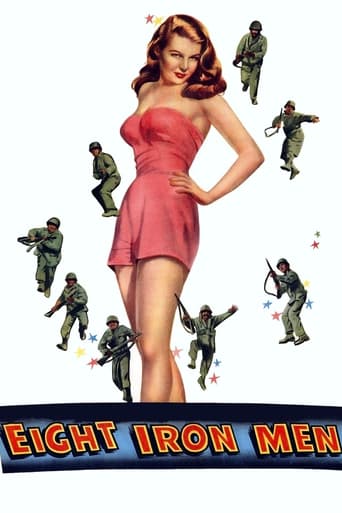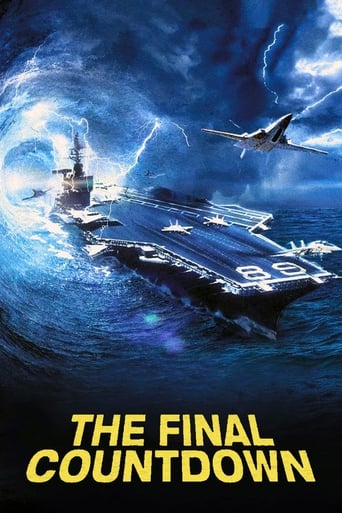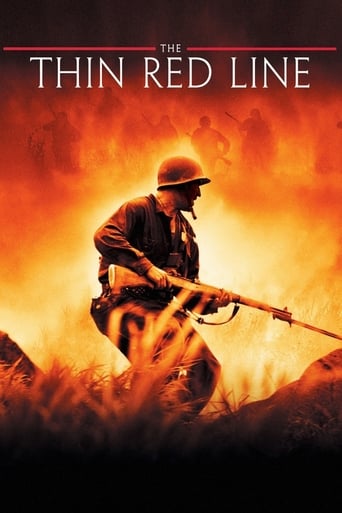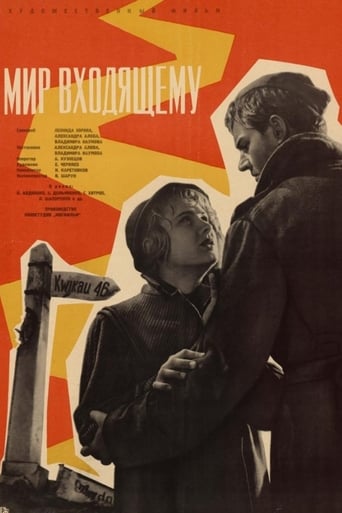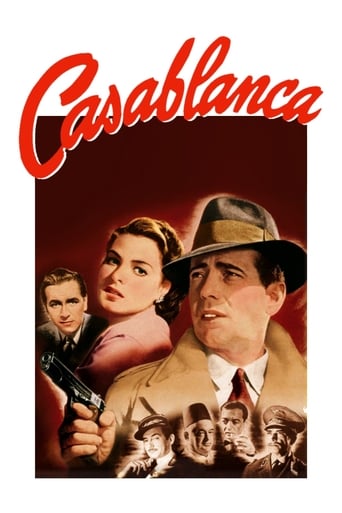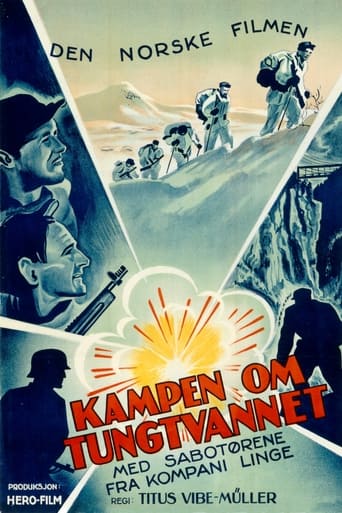

Operation Swallow: The Battle for Heavy Water (1948)
A factual reconstruction of the sabotage events which took place to prevent Hitler's Germany from getting the heavy water needed to make an atomic bomb during the Second World War.
Watch Trailer
Cast


Similar titles
Reviews
World War II had several important episodes, but over the years many of them were forgotten or not had due recognition. Besides the famous invasion of Normandy by the Allies, operation known as "D- Day", The Battle of the Heavy Water also played a key role in the outcome of that war. Directed by Titus Vibe-Müller and Jean Dréville in a French-Norwegian co-production, Kampen om Tungtvannet (original title) or Operation Swallow: The Battle for Heavy Water (in English) is a docudrama (documentary drama) that dramatically presented the reconstitution of these events that marked the history of the world and Norway.The film begins by an introduction to the war and the reasons that led France and Germany to become interested in the heavy water produced only in the chemical factory Norsk Hydro, in the Vemork plant on the outskirts of the town of Rjukan in Norway. The first country was seeking it to do research in laboratories on its effectiveness, while the second was aimed at getting it to build a secret weapon. As the heavy water was a byproduct of fertilizer production, its production was limited and on a small scale, which meant that any amount obtained become of paramount importance. While the Norwegians remained neutral in the war, the Allies were able to catch the first batch of the precious liquid. But with the invasion of Norway by the Germans, on the morning of April 9, 1940, the Nazis ordered the Norsk Hydro plant to increase its production. Realizing the threat that the plant had the British Intelligence in London with the Norwegian Resistance came together to take preventive measures and sabotage Nazi Germany's plans involving heavy water.Shot in black and white and without the aspects of large productions such as extravagant action situations and melodramatic approach, Kampen om Tungtvannet uses archival footage and reconstructs the other scenes with the participation of real life counterparts. This gives the movie plenty of realism and authenticity, as well as historical and educational features. Among the counterparts actors we can quote the scientists Frédéric Joliot-Curie and Lew Kowarski and most of the Norwegian saboteurs. So few characters were played by professional actors and the four native languages of the countries involved in the plot were kept: Norwegian, French, German and English. And it is exactly by the common aspect that this film stands out, especially when we remember what was at stake at that time. These are not synthetic heroes we find in American blockbusters, they are just ordinary men who risked their lives to prevent the victory of the Nazi Germany.The photography explores the mountainous region and the harsh climate of Norway through open shots. The rigorous living conditions to which the members of the Norwegian resistance underwent equate to the size of the challenge that was ahead: prevent the Germans build their secret weapon. They faced hunger, cold and also the enemy.This story was also dramatized in a British production called The Heroes of the Telemark (1965), with the participation of Kirk Douglas (citing some of his films: Ace in the Hole - 1951, Paths of Glory - 1957, The Vikings - 1958 and Spartacus - 1960) and Richard Harris (known for A Man Called Horse - 1970), and two TV mini-series, a Canadian (A Man Called Intrepid - 1979) and a Norwegian (Kampen om Tungtvannet - Stopping Hitler's Atomic Bomb - 2015). The Swedish power metal band, Sabaton, also honored this episode through the music called Saboteurs.War is not only won in the trenches or in the battle fronts, being fought by artillery fighting, but by the economic, social and mental mobilization in the rearward. It is won by the adopted strategies and resilience, bravery and wit of all its fighters.Originally posted in: https://vikingbyheart.blogspot.com.br
I saw this film originally in Norway (in Norwegian) in 1965 and was very impressed even then, particularly as several of the "actors" had taken part in the raid which made the film entirely credible. However, it is now possible to buy a version with English dialogue from the resistance and special forces museum in the Akershus fortress in Oslo. Ray Mears has also produced an excellent documentary for the BBC in which he attempted to re-create what happened. Several of the team were interviewed in that documentary. Inspired by the film we have visited Vermork the heavy water factory near Rjukan and were amazed at the skill and bravery of the men who took part in the raid, all of whom evaded the Germans and survived the war. The film made later in Hollywood starring Kirk Douglas does not reflect the reality in the same way.
I've received this movie from a cousin in Norway and had to convert it from Norwegian to American format with a copied video. Comparing this film (1948) with the Heroes of Telemark (1965), Kampen om Tungtvannet (The Struggle for the Heavy Water) casts the saboteurs themselves, playing their respective roles, though actors were also cast to play the roles of the saboteurs who have given their lives in Norway's struggle for freedom in later campaigns. The plot is in four languages: Norwegian along with French, German and English (complete with Norwegian subtitles).Impressive during this course of history was what led to the struggle. French scientists were interested in obtaining some two hundred kilograms of heavy water from Norsk Hydro in Vemork to take back to France in order to do lab studies on its effectiveness. Simultaneously, the Nazis, too, were interested in obtaining heavy water to build a secret weapon. The French were worried that the Nazis might take an early lead by invading Norway, and through secret codes, their man carefully eluded Nazi spies on his trip to Oslo where he received the heavy water and making it back without hindrance. He was watched by two spies as he boarded an airliner, but they did not see him hop out on the other side where he crossed the tarmac to another plane nearby where his cargo was waiting for him. This clever trick worked by using the airliner as a decoy that the Nazis later forced down in Hamburg.However, the invasion of Norway on the morning of April 9, 1940, the Nazis took over Norsk Hydro and it was up to the Norwegian Underground and British intelligence in London to take action. Professor Leif Trondstad volunteered the services of eleven young Norwegians; the "Swallow" and "Gunnerside" groups who would successfully sabotage the heavy water production in Vemork. This was shown in detail on how they actually carried out the operation, including the sinking of the ferryboat after the Nazis abandoned Norsk Hydro to take the shipment of heavy water on rail cars to Berlin.The quality of the film was fair though there were many splices in the film. I highly recommend this film to anyone interested in World War II history.
This movie is a half-documentary...and it is pretty interesting....This is a good movie...based on the true story of how a bunch of norwegian saboturs managed to stop the heavy water production in Rukjan, Norway and the deliverance of the rest of the heavy water to Germany.This movie isn't perfect and it could have been a bit better... the best part of the movie is that some of the saboturs are played by themselves!!!If you're interested in history of WWII and film this is a movie that's worth a look!!


